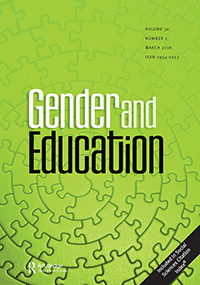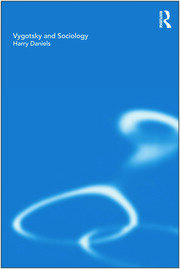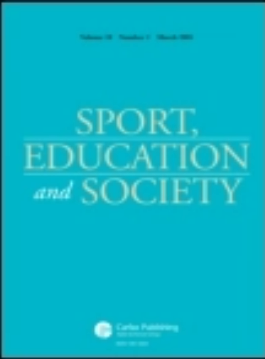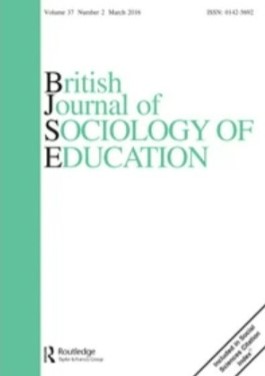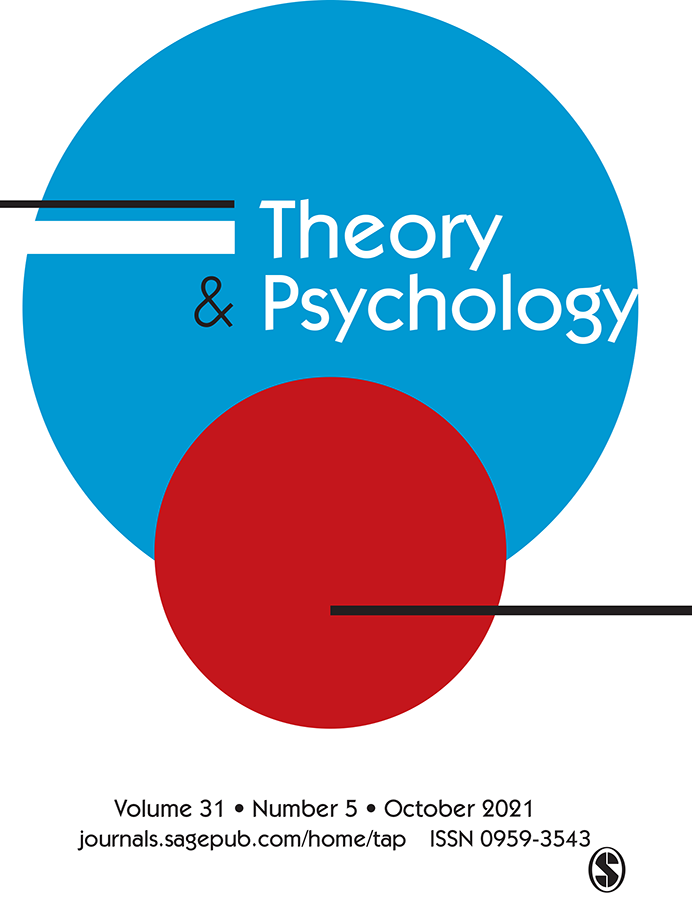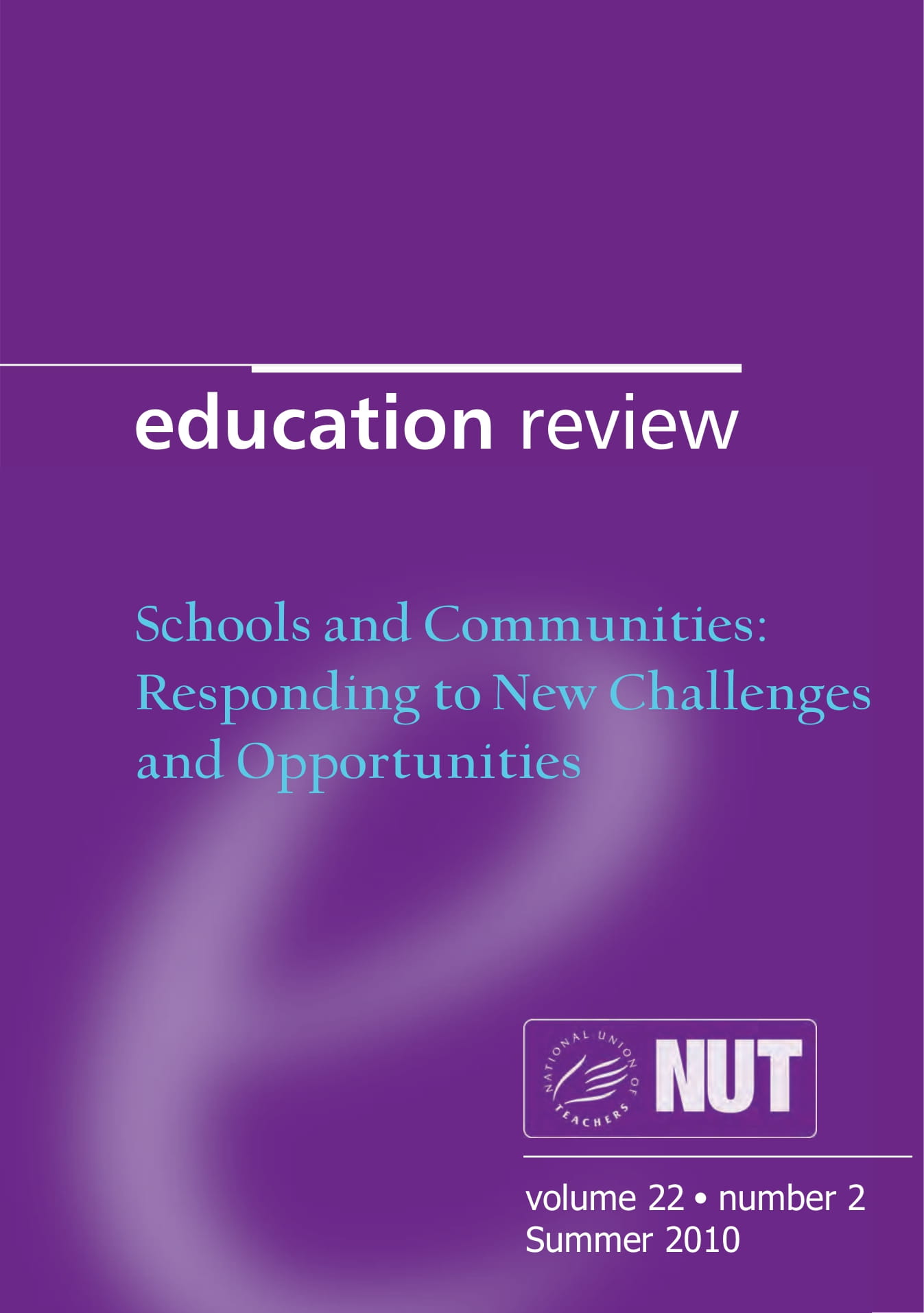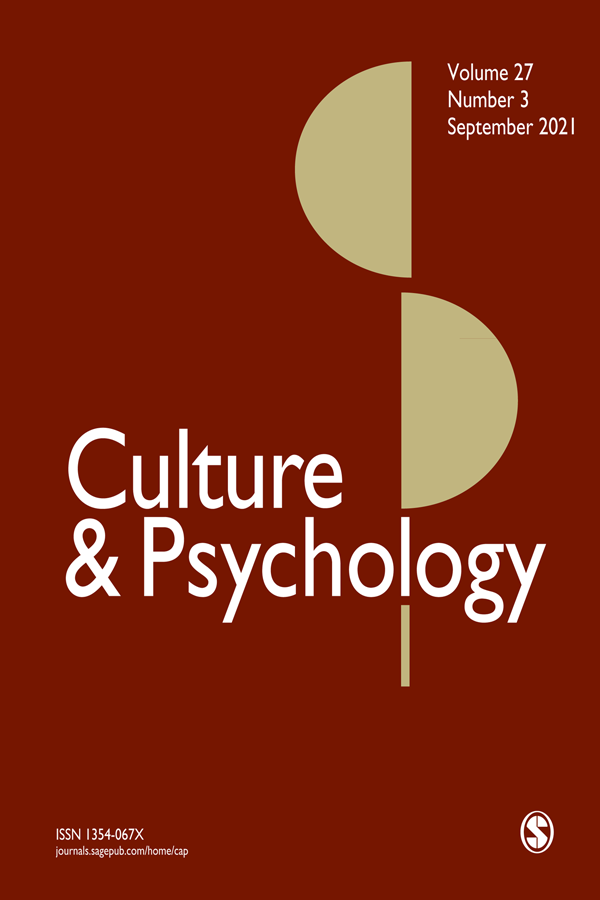Mae'r cynnwys hwn ar gael yn Saesneg yn unig.
The project was designed as an ethnographic study of one place, chosen by the wider Local Knowledge in Context Programme, referred to hereafter as Cwm Dyffryn.
Aims
The main aims of this project were as follows:
- To explore the ways in which young people understand the different places within their locality, and the ways in which these define their pasts, presents and futures
- To generate innovative mobile and participatory methodological approaches to research everyday use and negotiations of their localities.
- To produce new multi-modal longitudinal data with young people living in localities experiencing transitions due to de-industrialization in the representation of their everyday lives, cultures, identities practices and fantasies
- To disseminate methodological, theoretical and empirical knowledge to inform children’s policy and practice in areas such as education, youth work, social health, community development, public planning and children’s rights.
- To contribute to new theoretical synergies in conceptualising the relationship between locality, space and young classed and gendered subjectivities (e.g. embodiment, relationality and affect
Research questions
- How do young people understand different places within their local area and how does place contribute to forms of becoming and imagined future trajectories?
- What new theoretical synergies in conceptualising the relationship between locality, space and young classed and gendered subjectivities (e.g. embodiment, relationality and affect) are required to understand young people’s experiences of growing up in a specific post-industrial place?
- What are the policy implications and possibilities for impact of the project’s findings?
- What possibilities and challenges does the synthesis and analysis of multi-modal and multi-media data offer in the understanding and representation of young people’s embodied subjectivities and meaning-making of space and place?
Overview
The project worked with individual and groups of young people in a local small town setting. Over 60 young people were accessed via local secondary schools and youth work settings. A range of ethnographic methods were employed to generate multi-modal data representing the various geographies of young people’s appropriation and negotiation of local spaces. An iterative research design was used that allowed appropriate and innovative research instruments to be designed as the ethnography took place. The fieldwork produced a range of data forms (visual, material, aural, oral, digital and textual) and types (diaries, photographs/films, interviews, fieldnotes, collages, mental maps).
Semi-structured interviews
A large part of data generated comes from the initial one-to-one semi structured interviews. The initial formal interview had two sections. In the first, a specially designed set of 33 photographs of places and objects in and around Cwm Dyffryn (e.g. shops, amenities, police station, train station, streets in housing estates, a bedroom, a classroom, a computer and an iPod) was used in a sorting task. Participants were asked to sort the photographs into as many groups as they wished and justify their classifications. This was partly an ice-breaking activity and led into a second part of the interview, which involved semi-structured questions about, for example, favourite and least favourite places, places where they felt secure and in danger and places where they undertook activities with family, friends and alone. In the second section the photographs acted as stimulus-response material although participants were encouraged to talk about places beyond those depicted in the photographs. Interviews lasted between 45 minutes to two hours.
Using creative methods
Ethnographic fieldwork took place in classrooms, around school grounds, in a youth facility as well as ‘in the street’ using: individual narrative interviews, photo-elicitation, observation, movement diaries, classroom interventions (e.g. a debate about an undesirable place, map work), focus groups, walking tours, use of disposable cameras and film-making with a professional, independent film maker. There was a longitudinal element to the research design in that we interviewed a sample of young people twice or three times across the span of the project.
Film-making
In a final phase, short films were made with 15 of the original cohort in July 2011. Groups decided the topic of their film, chose the location and activities. Films were made in some of the places mentioned in interviews including forests, trails, skate-parks, garages, bedrooms, streets and schools spaces. The participant took it in turns to use the camera and other equipment. Cameras allowed dynamic, embodied, material reconfigurations of interview ‘talk’ that had been gathered in earlier stages of the project (Renold & Ivinson, 2011).
Analysis
Thematic and close case-study analysis was undertaken on a range of data sources to provide a rich description of a sample of young people’s understandings of place. Initially systematic thematic analysis of interview transcripts was aided by Atlas ti and identified over 70 emergent themes. Case-study analysis, that is, analysis relating to one person was analysed using narrative and psychosocial analysis (e.g. Barad, 2007: Braidotti, 2005, Walkerdine, 2011). Analysis of the film making process (Renold & Ivinson, 2011) was combined with interview analysis providing insights into specific individual’s embodied knowing (Ivinson & Renold, 2012). We have begun to identify the full range of specific ways of knowing and understanding place through these various multi-modal data sets. We have started to describe a spectrum with secure, well-anchored individuals at one extreme and at the other, individuals who appeared to be pulled in many directions.
Research Question 1: Substantive findings (reported as 3 themes)
Theme 1 Skilled bodies and the industrial past
Our work in an ex mining community of south Wales has demonstrated the importance of a historical analysis of place. Legacies from the mining and steel era still inform the values attached to skills and body practices. Associations between masculine skilled bodies and industrial past on the one hand and maternal bodies linked to domestic chains of responsibility were revitalised in the present. Boys in our study inherited body-practices and values from the industrial past and the values attached to them were still highly prized within the community. Although the employment landscape has changed for boys with low socio-economic capital since the 1970s (Willis, 1977) due to the decline in the industrial base and the scarcity of work-based apprenticeships, historical legacies relating skill to body-reflexive practices (Nayak, 2006; Jefferson, 2002) and working class masculinity remain. For example, many boys associated ‘real work’ with ‘dirt’ reflecting the body that labours. Boys developed skills and expressed desire, liberation and competence through techniques and bodily practices (e.g. trail biking, motor-cross, BMXing, skate boarding, swimming, rugby and football). In contrast, girls did not speak about their joy in undertaking skilled practices and even if they rode bikes or practiced judo, they spoke more about the need not to foreground these skills. The girls’ interviews displayed tensions, for example, between the need to present as feminine and activities that involved action and physicality or between their experiences of having sexually maturing bodies and the infantilising culture of their school (Ivinson & Renold, forthcoming). The historical legacy of young women growing up under the ubiquitous surveillance of a male gaze was evident in their narratives. Furthermore, the legacies of women’s role in holding communities together, managing and caring for others were revitalised in the way girls spoke about their futures. They seemed to struggle with conflicts between domestic care and education, often resolved by projecting themselves into feminine jobs such as nursery teachers. There was a sense in which having an active body facilitated boys’ transition into adulthood, while bodies held girls’ back and enmeshed them in compromised positions, in-between public/private, domesticity/employment and child/women. We are trying to understand how the value of the body, the skilled and working body required for heavy, manual labour or the caring, maternal body, provide symbolic resources for young people in the locale.
Theme 2 Rhythms of daily life and school life
Emergent findings suggest a dislocation between rhythms of daily life and school life. Many young people had encountered multiple and close experiences of loss, infant mortality, suicide, death, relative’s mental health problems, parents’ marital break-up, living in multiple households and complex and shifting family relationships. This complexity was compounded by fluctuations between times of scarcity and times of sufficiency due to lack of stable work and general poverty found in the area.
The rhythms of daily life were often irregular. Many young people spoke about staying up to the early hours of the morning playing interactive games, eating at random times, roaming far and wide without being called to account and sometimes choosing when to go to school. However, the rhythms relating to food, sleep, money and leisure varied greatly among the cohort. Some young people experienced regularity in the rhythms of daily life while others had considerable autonomy over their activities such that their daily rhythms were irregular and sometimes chaotic. Yet, even for those who had relatively regular routines, for example, of meal and bed times, they some moved among household in one week. At one end of the spectrum there were young people who lived within a stable family unit in one household comprising two adults and siblings, while at the other end of the spectrum were cases of young people who moved between three household in one week: a mother’s house during the week days, a father’s and a grandparent’s household at weekend. Thus some young people had highly complex everyday experiences within extended family networks. This represented a shift in living arrangements for young people in this locale between the present generation and their parent’s generation in which family units were relatively more stable (at least according to accounts that we received from some adults). While some young people’s everyday lives were characterised by mobility within and around Cwm Dyffryn and the surrounding countryside, this mobility was confined to the valley and Brecon regions. Trips into the city or to neighbouring counties and abroad happened infrequently, although up to one third of young people had experienced a holiday abroad (frequently mentioned destinations were the Canary Islands, Spain and the US).
Boys who talked about their skilled bodies in relation to motor cross, BMXing and skateboarding indicated that their bodily rhythms and movements were subject to surveillance, e.g. CCTV cameras; police; and other adults. Girls indicated more covert forms of surveillance, often by peers and relatives as well as CTCV cameras and police. The disjunction between the rhythms of everyday life and the rhythms of school life were manageable and positive for some groups while intolerable for others. Some girls spoke about school as a place of safety and predictability that allowed them to communicate and disclose to other girls. For some boys the disjuncture between the less regulated rhythms of daily life and the regularity expected in schools was too much to bridge and they often absented themselves. Some often found their bodies, ‘giving them away’, because they could not sit or stand still (Ivinson, 2011). The skilled body as a site of knowing tends to be disallowed in schools. The lack of synchronicity between school and outdoor life signals different rhythms of affect that can lead to exclusion and alienation for some while it can open up new avenues of possibility for others.
We have been grappling with why the wide gap between everyday and school experiences can be bridged by some young people and not by others. Work of the mind is privileged in school while the body is controlled, censored and suppressed. Boys in our study talked about being excluded from school because their bodies got them into trouble. Yet outside school the body was a source of joy and investment. Boys developed skill and expressed desire, liberation and competence through techniques and bodily practices (e.g. in motor-cross, BMXing, skate boarding and football). Girls drew far less on external objects and seemed to inhabit a highly developed world of internal objects. We suspect that the ‘escape’ into the world of romance, fiction and the virtual may have provided resources that allowed them to manage the complexities, pain and confinement of everyday life (Ivinson & Renold, forthcoming).
Theme 3 Contested spaces and liminal spaces
We came to recognise symbolic and affective associations that young people attached to places, such as bedrooms, school yards, the street, railway stations, mountains and parks. We also came to recognise the importance of virtual spaces especially for girls. Many boys gave us a sense that they occupied the public space in ways that girls did not (Ivinson, 2012 forthcoming A). They seemed to have roamed far and wide across the landscape and communicated a sense of freedom autonomy. The girls in contrast often spoke of being inside, in bedrooms and virtual space. Some girls occupied the local countryside in similar ways to the boys. They described using the mountains and pathways for specific reasons, often to escape claustrophobic peer group relations. While boys spoke about roaming far and wide, across the local landscape and especially mountains, girls spoke about roaming through virtual worlds from the safely of their bedrooms. Many participants spoke about their sense of being under surveillance in the town’s streets and as they entered shops. They identified specific places in parks or in housing estates where other young people gathered to drink alcohol and take drugs. These danger spots contrasted to what many described as their ideal public space represented by the modern, clean, glass-encrusted shopping mall epitomise by the new St David’s centre in Cardiff. Here young people said they felt happy and safe because malls were full of people and adults who were friendly and nice. Within schools, different places had different affective associations. For example, within one school, the yard was described by many as if textured. Some places in the yard were said to be common spaces that everyone passed through, others were safe spots while there was a hidden spot where a specific group gathered to smoke. Many young people talked about the spontaneous uprising of violence that happened in the street, the school yard or in the railway station. Some participants’ interviews were dominated by references to what appeared as random acts of violence providing a general sense of unease and even danger.
Some places emerged as contested places in which different groups had very different kinds of investments. For example, tensions between the boys’ skilled bodily practices while riding trail bikes in the mountains were reported between land-owners, the forestry commission, farmers, police and boys and their families. The boys expressed a sense of autonomy and competence in relation to activities such as BMX and motorbike trail biking. Many boys shared these hobbies with fathers, uncles and grandparents. Becoming skilled in biking or sport connected boys to their fathers and grandfathers and so to the community’s past. There were disjunctions between police and boys’ views in particular. Boys described their activities as legitimate and legal within the forest while we found a history of police pursing boys in order to prevent them from riding. Boys’ accounts of trail biking as a sub cultural activity illustrated the encroachment of the state in the process of becoming a trail biker and demonstrated how these particular skilled bodily performances were increasingly constructed as subversive. The project has raised issues about how people are connected to the land in different ways (Ivinson, 2012B, forthcoming).
We came to recognise the positive effects that circulate within post-industrial communities such as Cwm Dyffryn. For example, strong familial connections exist in extended family networks. Many young people spoke about the comfort and sense of belonging that came from having large family networks, especially when relatives lived locally and were in regular contact with participants. Not surprisingly ‘nans’ emerged as significant family members and many participants spoke of their nan as the main anchoring person in the family network. While some young people moved between two and three households across one week, many spoke about the importance of their families and the sense of belonging that they achieved from being part of large family networks. However, we have some examples of young people who moved between so many households with a variety of family members that they lacked on significant person who was able to hold them to account. For these young people the lack of family surveillance could be constructed as a lack of care and created situations in which they rarely had to take responsibility for their actions. Large family networks were sources of resilience for many young people yet for a few the fluidity of their involvement within and between networks and households amounted to a lack of structure.
Research Question 2: Theoretical synergies and developments
Time, place and becoming
To explore what it means to grow up in a place-world (Casey 2001), we sought to unpick how place provides sociocultural resources (Rogoff, 1990, 1996, 2003) that young people take-up and use within forms of becoming. The project was partly framed by research suggesting that young people’s aspirations, including educational aspirations, are influenced by community and family support networks (Goodman and Gregg 2010). One theoretical staring point was provided by (neo-Vygotskian) sociocultural theory and especially the concept of ‘situated practice’ (Lave, 1988). In line with sociocultural theory, we paid attention to the history of place (Holland and Lave, 2001) and routines of daily life as both an inheritance from the industrial past and specifically the requirement for a strong division of labour within families which acts a legacy of strongly demarcated gender roles (Ivinson and Renold, forthcoming).
Corporeality
Everyday skills are related to the rituals, routines and accepted ‘ways of doing things around here’ that are passed on as forms of intergenerational transmission. Here the sociocultural concept of ‘corporeal mimesis’ (Wulf, 2011) became a particularly useful concept. According to Vygotsky (1987), the mastery of behaviour represents the highest form of human will power. Cultural forms are captured by the concept of ‘tool’ which is used to signify the ‘sum total of achievements in an industrial, social and intellectual sense’ (Levykh, 2008, p 95). Mastery involves appropriating culturally available tools and resources (Engeström, 2007). When young people appropriate culturally available tools, they revitalise the whole system of practice through which tools and conventional ways of being were developed. While the past is brought forward into the present through activity, such practices are also transformed. Wulf (2005, 2011) has argued that the key to transformation in processes of mimesis is corporeality. In this study, skilled practices were revitalised and reworked when men shared activities such as trail biking with boys. It is the repetitive aspect of everyday rituals that forges familiar patterns that constitute the ways of ‘doing things around here’ (Holland and Lave, 2001) and creates feelings of belonging. Thus taking part in the historically recognised practice of trail biking inducts young people into forms of masculinity that linked them to the industrial past.
Embodied knowing and intergenerational transmission
Much of such everyday practices are so familiar to participants that they are not always easily articulated. Therefore we came to work with notions of embodiment and embodied knowing turning recent developments within material feminism (Braitotti, 2006; Deleuze and Guattari, 1987; I-M Young, 2005). As part of this we have been investigating what some young people appear to know yet cannot always speak about explicitly. Here, the range of research instruments and especially the film-making methods were particularly informative (Renold and Ivinson, 2011 – film piece). We have started to explore intergenerational transmission of trauma (Guattari, Chaosmosis, 2005, Walkerdine, 2010, community ‘beingness and affect’) and are working with the interview transcripts of some of the more ‘troubled’ participants to explore relations between the past and forms of becoming that may suggest why some young people find it difficult to manage within school and to imagine moving on and out of the places where they are growing up. This work is informing the on-going work on those who find themselves post-sixteen not in education, employment or training (NEETS). See section on impact below.
Research Question 3: Methodological developments and reflections (also see section on methods above)
Ethnographic and rhizomatic methodologies
We employed a wide range of research methods within a broadly ethnographic approach. We worked in three primary sites, two secondary schools and a youth facility in the same town over a 15 month period. At different points we used: observation, both participatory and non participatory in a range of sites and spaces (including organised leisure activities and ‘hanging out’; questionnaires; individual interviews that were semi structured and used visual images, including sorting tasks using visual images as stimuli; focus groups; mental maps; drawing tasks such as maps of school journeys and of the locale; Google earth map images as stimuli; mobile methods such as walking tours; asking participants to take photographs using disposable cameras followed by interviews based on the developed photo images and fieldnotes.
The nature of the research required us to be highly responsive, innovative and to design instruments in situ and in response to emerging issues. This was particularly the case when developing research relationships with many of the more vulnerable people, such as those who regularly went to the local youth centre. In this setting, the often impromtu design of specialist instruments worked best when they were situated within an existing activity or event. For example on Halloween we designed a task that involved a large map of the town and its locale as the basis for inviting stories (audio recorded vox pops) about ‘Scary Cwm Dyffryn’. Paying attention to the relationship between the ‘where of methodology’ (Anderson and Jones 2009) and young people’s existing engagement with specific techniques and methods was also central to the generation of productive data. For example, creative and mobile methods, such as the walking tours, worked best when our methods matched young people’s existing engagement with enjoying using similar media (e.g. camcorders, photos) coupled with their enjoyment of the local outdoors.
Therefore we wish to describe our general research approach as messy, rhizomatic and unpredictable. We retained a constant dialogue between emerging issues and the iterative design of research instruments (Renold & Ivinson, 2011). While these are the features of Glaser and Strauss’ (1967) classical account of the ethnographic process (see also Atkinson et a. 2009), we wish to draw attention to dead-ends, trial and error, unpredictable and deeply responsive nature of the research approach that we found we had to take when working with vulnerable young people.
Multi-modal analysis
A fundamental aspect of our analytic journey when exploring our multi-modal and multi-media data is the significance of multi-sensory meanings (Pink 2010). Specifically, we are beginning to map the relationship between what Hurdley and Dicks (2011) write about as ‘emplaced’ (endogenous) meaning making (e.g. here and now spontaneous eruptions of movement, sound, voice, object) and displaced (exogenous) meaning making (e.g. residual meanings that escape the here and now, such as the symbolic or socio-historical legacies). Deleuzo-Guatarrian theories of ‘assemblages’ have been particularly productive here (Ivinson and Renold, submitted paper to Gender and Education)
Film-making project: dissemination and public engagement
The final phase of the Young People and Place project fulfilled the wider WISERD commitments of ‘engagement, impact and use of data’ and specifically to meet one of the 4 key objectives outlined in the proposal to: “develop ways of representing multimodal and multisensory local knowledge(s) for sharing with and utilisation by policy-makers, practitioners and other expert groups”.
Here we worked with 15 young people (aged 15) who have previously participated in the research to reflect upon key findings (presented visually and textually) from the initial analysis of the fieldwork and to represent this process on camera.
Engagement methods
Two one week multi-media workshops were organised in the two secondary schools with two groups of (previously participating) students who wish to be involved.
Products
The final outcomes included 7 films (see outputs above) and data (visual/audio/fieldnotes) on the film-making process.
This final phase of the project built upon the experience and expertise of working with audio-visual methods and products from previous ESRC-funded projects (e.g. Digital Ethnography project and the Qualiti node in the ESRC Centre for Research Methods). One of the key methodological focuses of these previous projects has been to explore the ethical implications of participative research using visual methods with children.
Both the participative nature of the research and the use of visual research methods pose ethical challenges and opportunities. The phase built upon previous insights of working with the ethical dilemmas often identified as being problematic in such research (Wiles et al. 2010). As such, this final phase, like previous phases, developed a range of ethical protocols with research participants as they arose, where consent and protection from harm was on-going and foregrounded throughout the fieldwork (see Renold et al. 2008). Despite the aim for an organic and gradual development of ethics-in-practice we nonetheless closely observed established ethical guidelines (e.g. British Sociological Association, ESRC)
Indeed, prior to entering the field a series of consent forms were created that comply with best practice on the making of visual products with young people, where their image may be identifiable and where legal issues around copyright for participant generated films needs to be attended to (Wiles et al. 2010). We thus included young people/parent consent forms for both participation in the film-making project and young people/parent consent forms for the release of the films (following a viewing of the film/s). We also created consent forms for those young people or adults who were interviewed or filmed as part of the film-making project. There are several levels of consent that allow young people and parents/guardians a range of options in the archiving and showing of non-anonymised images.
As in previous projects, this final phase involved a thorough audit and evaluation of the efficacy of the ethical procedures involved in the film-making project. We developed further ethical protocols as other unanticipated ethical issues emerged regarding the involvement of young people in research activities where they are producing and disseminating visual materials.
Returning the finished products back to participants threw up another range of issues that have proved to be revealing. For example, we were struck at the extent to which young people focussed on their moving bodies while expressing concern and self-consciousness at viewing themselves on film. We offered to edit the films further according to the young people’s reactions. In general the groups were delighted with their films although there were a few who distanced themselves from the film in which they featured suggesting that did not feel a sense of pride and ownership
Research Question 4: Policy implications of the study
Working class youth especially in the old coal and steel producing areas of the country live at a pivotal point betwixt the industrial past and emergent economies of global capitalism (Ivinson, forthcoming 2012B). We do not know if the crumbling structures of the old economy are going to support new economic growth. Whilst youth bear the brunt of social rupture, emplaced images of working class boys and girls have become a symbolic dumping ground for ubiquitous fears and anxieties that go hand-in-hand with social change. Discourses of lack (e.g. “poverty of aspiration”) and pathologised notions of ‘at risk’ and ‘risky’ lifestyles have become synonymous with white working class boys and girls. Such discourses and the interventions they spawn, however, frequently fail to connect with young people’s working class traditions, community ethos, housing and family structures and the very different social and economic conditions compared to other middle class young people.
The question that we face is, do we wish to draw on working class traditions as potential sources of social renewal or do we wish to eliminate working class perspectives from future social imaginaries? For example, the remarkable complexity of post 14 education provision appears to encompass every possible route forward. However, the Dem Con government under Grove’s education review appears to be returning to subject content. In Wales anxieties about the place of Wales in PISA global league tables of educational achievement in mathematics, science and literacy is shifting the educational agenda back to basics and away from the more innovative pedagogies devised within the Learning Country Programme. What effect will these policy shifts this have on school teachers’ abilities and willingness to recognise and validate the indigenous skills, and ways of connecting that have helped working class communities to survive in the past? Our findings suggest that educational initiatives aimed at improving young people’s performance in tests need to start with a strong understanding of the resources within local communities that allow people to feel safe, secure and to have a sense of belonging. Neo Vygotskian theories are increasingly pointing to the importance feelings, affects and emotions in processes of learning (e.g. Levykh, 2008; Hedegaard and Chaiklin, 2007). Educationalists need to work with and not against the values and resources that circulate in local communities. Will the young people that we encountered be able to forge new ways to think about their futures?
Film-making project: dissemination and public engagement
This final phase of the Young People and Place project fulfilled the wider WISERD commitments of ‘engagement, impact and use of data’ and specifically to meet one of the 4 key objectives outlined in the proposal to: “develop ways of representing multimodal and multisensory local knowledge(s) for sharing with and utilisation by policy-makers, practitioners and other expert groups”.
Here we worked with 15 young people (aged 15) who have previously participated in the research to reflect upon key findings (presented visually and textually) from the initial analysis of the fieldwork and to represent this process on camera.
Engagement methods
Two one week multi-media workshops were organised in the two secondary schools with two groups of (previously participating) students who wish to be involved.
Products
The final outcomes included 7 films and data (visual/audio/fieldnotes) on the film-making process. These films will be shown at the school prize giving and other venues (research conferences, policy events etc. where appropriate)
This final phase of the project built upon the experience and expertise of working with audio-visual methods and products from previous ESRC-funded projects (e.g. Digital Ethnography project and the Qualiti node in the ESRC Centre for Research Methods). One of the key methodological focuses of these previous projects has been to explore the ethical implications of participative research using visual methods with children.
Both the participative nature of the research and the use of visual research methods pose ethical challenges and opportunities. The phase built upon previous insights of working with the ethical dilemmas often identified as being problematic in such research (Wiles et al. 2010). As such, this final phase, like previous phases, developed a range of ethical protocols with research participants as they arose, where consent and protection from harm was on-going and foregrounded throughout the fieldwork (see Renold et al. 2008). Despite the aim for an organic and gradual development of ethics-in-practice we nonetheless closely observed established ethical guidelines (e.g. British Sociological Association, ESRC).
Indeed, prior to entering the field a series of consent forms were created that comply with best practice on the making of visual products with young people, where their image may be identifiable and where legal issues around copyright for participant generated films needs to be attended to (Wiles et al. 2010). We thus included young people/parent consent forms for both participation in the film-making project and young people/parent consent forms for the release of the films (following a viewing of the film/s). We also created consent forms for those young people or adults who were interviewed or filmed as part of the film-making project. There are several levels of consent that allow young people and parents/guardians a range of options in the archiving and showing of non-anonymised images.
As in previous projects, this final phase involved a thorough audit and evaluation of the efficacy of the ethical procedures involved in the film-making project. We developed further ethical protocols as other unanticipated ethical issues emerged regarding the involvement of young people in research activities where they are producing and disseminating visual materials.
Returning the finished products back to participants threw up another range of issues that have proved to be revealing. For example, we were struck at the extent to which young people focussed on their moving bodies while expressing concern and self-consciousness at viewing themselves on film. We offered to edit the films further according to the young people’s reactions. In general the groups were delighted with their films although there were a few who distanced themselves from the film in which they featured suggesting that did not feel a sense of pride and ownership.
Welsh Government
Cross party group: ‘Childhood, Sexuality, Sexualisation and Equalities’
The group is spearheaded by South Wales East AM Jocelyn Davies, and a steering group led by Dr Emma Renold, of the School of Social Sciences, the NSPCC and the Children’s Commissioner’s Office. A key aim of the group is to provide the Welsh Government with practical solutions to tackle the issue of sexualisation within the context of its due regard duty to the United Nations Convention on the Rights of the Child.
Findings from the ‘Young People and Place project’ launched the event. The paper presented, was titled: “Girls, Bodies and Objectification in an era of ‘sexualisation’: experiences from the south wales valleys’’.
This presentation drew specifically upon data generated in the Young People and Place Project. It highlighted the struggle for girls to create spaces to express themselves with the full capacities of their bodies that are not immediately sexualized. It argued how girls’ sexualities need to be seen in place and time (e.g. how girls inherit and negotiate historical legacies of gender/class/sexuality that is place-specific). The cross-party group aims to build on the Cardiff research, raising political and public awareness of these issues. Led by Dr. Renold, they will be talking to children and young people directly about their experiences of sexuality and sexualisation across Wales (see ‘future research’ below).
Radio Wales series of programmes on NEETS
An independent documentary producer, Jeremy Davies is making a series of three programmes for Radio Wales on the causes of NEETs. We conducted four hours of audio recording with Jeremy in Cwm Dyffryn. His questions were based on the papers we had sent him on the project in advance (e.g. Ivinson, 2012A and B, forthcoming). In particular, Jeremy was interested in the biker boys and how they had learned skills from previous generations of men in the locale. With the headteacher we arrange for the biker boys to be interviewed for the programme. Full ethical approval from participants and their parents was sought.
We used insights for young people and place project to suggest some of the influences that lead to some young people becoming so called NEETS. We focused on the ‘invisible skills’ displayed by young people that are not recognized in schools, arguing for a need to widen what counts as knowledge especially in the 14-19 curriculum.
We pointed to the important of places of belonging in line with Walkerdine and Jimenez, (2012) and stressed that attachment to place provides security when many other aspects of these young people’s lives were shifting or precarious. We argued for a radical review of post 16 provision in line with Keep et al. 2009, 2011.
School Prize Giving
We have been invited as the principal guest speakers at the school prize giving on April 03 2012, when we will have the chance to tell parents about the research findings and celebrate the skills and practices that young people demonstrated beyond the school gates.
Welsh Government
Cross party group: ‘Childhood, Sexuality, Sexualisation and Equalities’
The group is spearheaded by South Wales East AM Jocelyn Davies, and a steering group led by Dr Emma Renold, of the School of Social Sciences, the NSPCC and the Children’s Commissioner’s Office. A key aim of the group is to provide the Welsh Government with practical solutions to tackle the issue of sexualisation within the context of its due regard duty to the United Nations Convention on the Rights of the Child.
Findings from the ‘Young People and Place project’ launched the event. The paper presented, was titled: “Girls, Bodies and Objectification in an era of ‘sexualisation’: experiences from the south wales valleys’’.
This presentation drew specifically upon data generated in the Young People and Place Project. It highlighted the struggle for girls to create spaces to express themselves with the full capacities of their bodies that are not immediately sexualized. It argued how girls’ sexualities need to be seen in place and time (e.g. how girls inherit and negotiate historical legacies of gender/class/sexuality that is place-specific). The cross-party group aims to build on the Cardiff research, raising political and public awareness of these issues. Led by Dr. Renold, they will be talking to children and young people directly about their experiences of sexuality and sexualisation across Wales (see ‘future research’ below).
Radio Wales series of programmes on NEETS
An independent documentary producer, Jeremy Davies is making a series of three programmes for Radio Wales on the causes of NEETs. We conducted four hours of audio recording with Jeremy in Cwm Dyffryn. His questions were based on the papers we had sent him on the project in advance (e.g. Ivinson, 2012A and B, forthcoming). In particular, Jeremy was interested in the biker boys and how they had learned skills from previous generations of men in the locale. With the headteacher we arrange for the biker boys to be interviewed for the programme. Full ethical approval from participants and their parents was sought.
We used insights for young people and place project to suggest some of the influences that lead to some young people becoming so called NEETS. We focused on the ‘invisible skills’ displayed by young people that are not recognized in schools, arguing for a need to widen what counts as knowledge especially in the 14-19 curriculum.
We pointed to the important of places of belonging in line with Walkerdine and Jimenez, (2012) and stressed that attachment to place provides security when many other aspects of these young people’s lives were shifting or precarious. We argued for a radical review of post 16 provision in line with Keep et al. 2009, 2011.
School Prize Giving
We have been invited as the principal guest speakers at the school prize giving on April 03 2012, when we will have the chance to tell parents about the research findings and celebrate the skills and practices that young people demonstrated beyond the school gates.
Conference Presentations
Ivinson G, Renold E, 2012, ‘Affect and Materiality: rethinking culture in a post-industrial locale’ paper presented at BSA ‘Intersecting Family Lives, Locales and labours’ Families and Relationships Study Group Day Conference, 3rd Feb, London South Bank University, London, UK
Ivinson G, Renold E, 2012, ‘Valley girls: re-theorising bodies and agency in a semi-rural post-industrial place’, 11-13 April, Gothenburg, Sweden
Renold E, Ivinson G, 2012, ‘Young people and sexual assemblages: changing theories, changing subjectivities in changing times’, paper presented at Studying gender and sexuality psychosocially: Dialogue across perspectives, 15 May, Open University, UK (Invited panel)
Ivinson G, 2012, ‘Boys, skills and class: educational failure or community survival? Insights from Vygotsky and Bernstein’, paper presented at VII international Basil Bernstein Symposium, 28-30 June, Aix en Provence, France
Ivinson G, 2011, ‘Young people’s working-class skills: entrepreneurial activity or subversive practice?’, paper presented at Symposium Becoming some-body in post industrial locales: rethinking class, gender and resistance beyond the bounded, autonomous subject, Gender and Education Annual Conference, 27-30 April, Exeter, UK (organiser G. Ivinson)
Ivinson G, 2012, ‘Beyond absent moving bodies in pedagogic practice; the case of dance pedagogy’ paper presented at Symposium ART, CRAFT and PERFORMANCE. Cardiff Ethnography, Culture and Interpretive Analysis Research Group and Exeter Sociology of the Arts Research Group, 1-2 December, Cardiff, UK
Ivinson G, Märtsin M, 2011, ‘Solidarities for transitions: parenthood as an ambivalent social resource’paper presented at Class, gender and solidarities, Social identities and social divisions BSA Annual Conference, April, London, UK
Dicks B, Ivinson G, 2011, ‘Accessing classed experiences: reflections on the research relationship’ paper presented at Class, gender and solidarities, Social identities and social divisions BSA Annual Conference, April, London, UK
Märtsin M, Ivinson G, Renold E, Moles K, 2011, ‘Transitions to elsewhere? Exploring the limited horizons of young people from a post-industrial locale’ paper presented at Exploring the dialogues of young people in transition, Sixth International Conference on the Dialogical Self, October, Athens, Greece (Organiser Mariann Märtsin)
Moles K, Ivinson G, Martsin M, 2010, ‘Moving in, through and out of place’ paper presented atEUROQUAL, 4-6 May, London, UK
Moles K, 2010, ‘Time, place and embodied knowledges’ paper presented at Researching locality and place, Fourth ESRC Research Methods Festival, July, Oxford, UK
Dicks B, Holland S, Ivinson G, Moles K, Renold E, 2010, ‘Young people and the modalities of place’ paper presented at Fourth ESRC Research Methods Festival, July, Oxford, UK
Ivinson G, 2009, ‘Reclaiming skill as a subversive practice: Socio-cultural approaches and educational policy’ paper presented at BERA, August, Edinburgh, UK
Films
- Still Running
- Shades of Place
- Ffrindiau: They Stick Together
- Simplicity: The Beginning
- Skid
- Closing the youth centre





